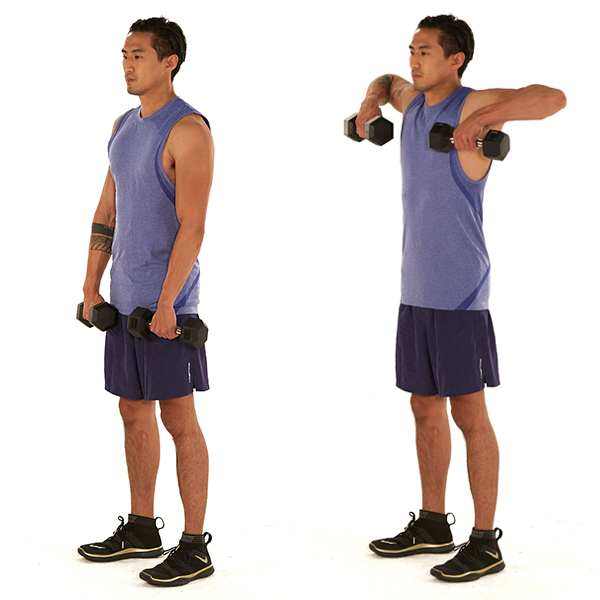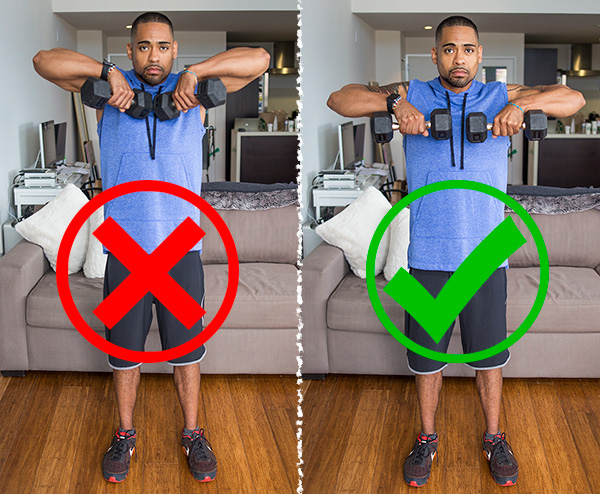How to Do a Dumbbell Upright Row

When it comes to building strong, shapely shoulders, exercises like presses and raises get most of the attention. But if you want to maximize strength and muscle gains — not to mention nail those coveted shoulder caps — consider adding the dumbbell upright row to your next shoulder workout.
Dumbbell Upright Row: Step-by-Step Instructions

- Stand holding a pair of dumbbells at arm’s length in front of your waist, palms facing toward you.
- Slowly lift the weight in front of your torso, keeping it close to your body, until your elbows reach shoulder height.
- Pause, then reverse the movement, lowering the weights back to the starting position.
Bonus Tips for Doing the Dumbbell Upright Row
Maintain shoulder engagement and reduce the risk of injury by capping the lifting phase at the point where your elbows reach shoulder height, says Beachbody fitness expert Cody Braun.

Additionally, changing the angle of the lift will emphasize different muscle groups: Keep the weights closer to your body to challenge the front delts and upper traps or use a cable extension to pull the weight at an angle, which will shift the focus to your rear delts.
Variations on the Dumbbell Upright Row
Swap out the dumbbells for a cable extension or EZ curl bar (a curvy bar typically used for biceps curls). The advantage to using dumbbells is that your shoulder blades have greater freedom of movement, whereas a barbell locks them into a more rigid position, Braun says.
Is the upright barbell row bad?
Performing a flat barbell upright row encourages an unnatural movement pattern that can force your elbows above your shoulders to complete the move. That can increase the risk of shoulder impingement, so the flat barbell upright row is not recommended.
Benefits of the Upright Row
Many shoulder exercises — namely lateral raises, front raises, and rear deltoid raises — place your arms in disadvantaged positions, thereby limiting the amount of weight you can use. The dumbbell upright row, however, allows you to lift heavier weight, giving your upper back and shoulders greater strength and growth potential.
“This movement pattern also strengthens the transition between picking something heavy off the floor and positioning it for a pressing motion overhead,” Braun says.
Muscles Targeted by the Dumbbell Upright Row

Trapezius
Your traps form the kite-shaped sheet of sinew that runs vertically from the middle of your back up to your neck and out toward your shoulders. The trapezius helps raise, retract, and lower your shoulders, as well as extend your neck.
Deltoids
The slabs of muscle capping your upper arms are actually comprised of three heads: anterior (front), lateral (side), and posterior (back). They raise your arms out in front of you, to the side, and behind you, respectively.
Biceps
Located in the front compartment of your upper arm, your biceps are responsible for bending your elbows, and also help rotate your palms upward.
